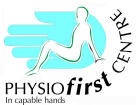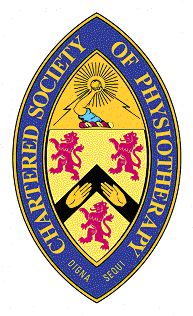


Treatment Techniques Available
Links
|
Manual Therapy This is the collective term given to the physical ‘hands on’ aspect of our work and is an integral part of most clinical treatments that we apply. A high percentage of musculoskeletal problems will respond favourably to some form of physical therapy, but there will always be a few patients who have conditions where this form of treatment may not be appropriate. Your therapist may choose a range of physical techniques available to him/her in the management of your condition. These may range from gentle mobilisation procedures where joints are ‘mobilised’ using low grade oscillatory movements, to more forceful manipulative techniques where high velocity thrusts may be used. In either case a clear explanation of the procedure will be given to the patient during treatment. Also included in this group of manual techniques are soft tissue mobilisation procedures where the aim is to loosen scar tissue that may have become adherent, thickened. It is important to maintain the elasticity and flexibility of muscles, tendons and ligaments in order for the relevant body part to function normally. These techniques include manual stretching and friction massage techniques.
Electrotherapy Electrotherapy is often used by physiotherapists to supplement the manual therapy that is given to patients. The main aims of treatment here are twofold: 1. To assist in pain relief by sedating the pain nerve endings and sensory structures. 2. To increase the local blood supply and stimulate cells directly to enhance the natural repair process of the damaged area. This is often referred to as ‘speeding up the healing process’. There are numerous forms of electrotherapy that can assist with the above, but the ones that may be used at our clinic (APSIC) are: Ultrasound therapy Laser therapy Interferential therapy Pulsed short wave diathermy Transcutaneous nerve stimulation (TENS)
Acupuncture Breaking away from more traditional physiotherapy, all our clinicians have done post graduate training in the use of acupuncture for the relief of pain. Experience has found that sometimes patients who do not respond well to conventional physiotherapy treatment, respond brilliantly to the long established powers of clinical medicine. Acupuncture has been used in China for between 3,000 and 4,000 years. It has how become more commonly used by physiotherapists both in the NHS and private sector since 1982 and is widely accepted as another useful treatment option for some of their patients.
How does acupuncture work? The process involves the use of fine needles which are inserted into special points in the body (acupuncture points), in order to stimulate nerve fibres situated in the skin. By stimulating these fibres there is an increase in endorphin production, which is the body’s own chemical product in relation to pain control. By blocking out the impulses of some of the smaller pain nerve fibres there is a balancing effect in the amount of pain that is felt, controlled by the higher centres in the central nervous system found in the brain. Impulses are sent down the spinal cord to local levels and causes a reduction in pain.
Does it hurt? Many patients doe not feel the needles at all. They are usually inserted between 1/4” and 1 1/2” depending on the body part and usually close to, or around, the painful area. The most discomfort patients describe is usually that of a nettle sting. Usually patients are physically surprised that the discomfort of inserting the needles is not half as bad as they imagined and certainly as nowhere near the level of pain that they are usually experiencing from their condition anyway!
How are the needles used? Fine, pre-sterilised needles are inserted into the acupuncture points following cleaning of the skin with an alcohol impregnated swab. The needles are left in place for up to 20 minutes. Sometimes the needles may be rotated a few times periodically during the time that they are in place to fully ensure maximum stimulation of the receptor point. Again this may occasionally feel mildly uncomfortable whilst this is being done. Once the needles have been removed, both needles and swab and placed in a sharps bin ready for incineration.
What may I feel/see? You may well feel nothing at all once the needles are in situ, but other patients report: 1. A tingling sensation spreading from the point used. 2. A little light headed. 3. A reddening of the area of skin spreading from the point used.
Spinal Traction This technique has been used by physiotherapists for many years and often looks much worse than it actually is! It is commonly used for spinal problems where bulging or prolapsed discs are placing pressure on a spinal nerve root, giving severe limb pain. This is often seen in acute sciatica where the pain is referred to the leg from the back, and in the cervical spine where pain is referred into the arm from the neck. GP’s frequently use the term ‘trapped nerves’ to describe the symptoms produced by this group of patients and help them understand the principles of what is happening. There are varying degrees of nerve root impingement. Some patients will have minor discomfort or pins and needles in the limb, others will have very acute pain, even at rest, and difficulty using the limb at all. The main aim of cervical or lumbar traction is to relieve pressure on the nerve root by creating a little more space for the offending disc. We do this by applying a longitudinal stretch to the spine and maintaining this stretch for up to 20 minutes. Harnesses are used around the pelvis and chest for lumbar traction and around the back of the head and jaw for cervical traction. The effect of relieving pressure on the nerve root is usually gradual and the patient should not expect ‘instant’ cure for this type of problem.
Exercises and rehabilitation The importance of this section of the treatment package cannot be over emphasised. It necessitates the direct involvement of the patient in doing their exercise regimes in order to enhance the recovery process. It is not something your physiotherapist can do for you and without it, the patient is unlikely to achieve their full potential towards recovery. It is our opinion that the patient must take some responsibility for their own well being and we have often found that patients prefer to be involved and contribute to their recovery rather than simply relying on a practitioner to ‘fix’ them. Your physiotherapist will give you clear instructions in the type of exercise that you need to be doing. This often includes written/diagrammatic representation of the specific exercise regime. Also identified is the frequency with which you need to perform the exercises. Remember also that exercises may be designed to do different things. Some may be for strengthening muscle groups to help protect vulnerable areas; some may be to improve flexibility of shortened soft tissues and others may be used to stabilise an area to prevent unwanted stresses and strains through the musculoskeletal structure being treated. Exercises can also be used in a ‘preventative’ capacity to help to minimise the chances of recurrence of an injury.
Isokinetics This is specialised equipment that is used to take strength readings of muscle groups and give feedback information to the patient regarding precisely what level of strength of an injured limb they have, compared to the non-injured side. It is frequently used following surgery or to help determine whether someone can return to sporting participation knowing that they have recovered a high percentage of muscle strength. This, therefore, is used to increase confidence and ensure that any exercise routine that is being followed is being effective, as intermittent tests can be carried out to check on progress throughout their rehabilitation. Isokinetics can also be used as part of a strengthening regime under the supervision of your therapist. It is a safe way of training since it does rely on choosing appropriate weights and will ‘accommodate’ patient’s pain and weakness levels during the exercise phase. It basically resists the limb being trained as hard as the patient wants it to be resisted. Isokinetics therefore relies on a high level of motivation from the patient to get the best effect, but can easily be used whether are relatively strong or relatively weak! This type of equipment is commonly used on lower limb injuries following fractures, dislocations, periods of immobilisation in plaster of paris and surgery. |